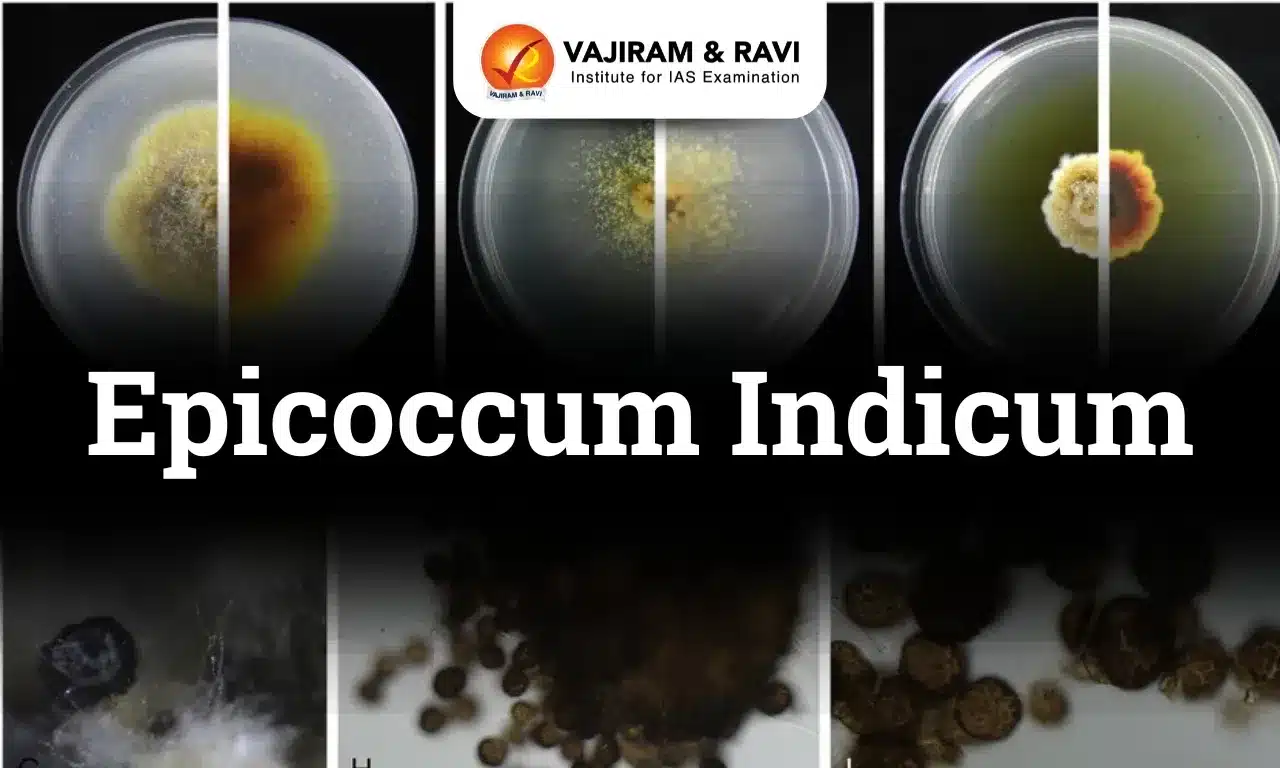Epicoccum Indicum Latest News
A new species of phytopathogenic fungi, epicoccum indicum (Ascomycota, Didymellaceae), associated with an emerging leaf spot disease in Chrysopogon zizanioides (vetiver), was recently discovered by researchers at Banaras Hindu University.
About Epicoccum Indicum
- It is a new species of phytopathogenic fungi.
- The species name refers to India, where it was discovered.
What are Phytopathogenic Fungi?
- Phytopathogenic fungi are fungi that cause diseases in plants, leading to significant economic losses in agriculture and horticulture.
- 70–80% of plant diseases are caused by phytopathogenic fungi.
- They infect various parts of plants, including roots, stems, leaves, flowers, and fruits.
- Most phytopathogenic fungi belong to the Ascomycetes and the Basidiomycetes.
- They use various strategies to colonize plants and cause disease.
- They possess a wide range of enzymes destroying the carbohydrate polymers, which constitute the building materials of the cell walls.
- Some fungi kill their hosts and feed on dead material (necrotrophs), while others colonize the living tissue (biotrophs).
What is Leaf Spot Disease?
- Leaf spot diseases are a collective term for a variety of fungal and bacterial infections that cause discolored lesions or spots on the leaves of affected plants.
- These spots can range in size, color, and shape and can compromise the plant’s health if severe.
- Leaf spot diseases are primarily caused by pathogenic fungi, though some are caused by bacteria.
- These pathogens exploit the leaf’s surface and, once established, can quickly proliferate, producing visible spots or lesions.
Source: TOI
Epicoccum Indicum FAQs
Q1. What is Epicoccum in humans?
Ans. Epicoccum spp. is considered as one of the most important fungal allergens.
Q2. What are the symptoms of Epicoccum?
Ans: Symptoms associated with Epicoccum exposure include sneezing, runny or stuffy nose, dry and scaling skin, itchy or watery eyes, and in severe cases, difficulty in breathing.
Q3. Can mold allergy be cured?
Ans: While there’s no sure way to cure allergic rhinitis caused by a mold allergy, a number of medications can ease your symptoms.
Last updated on December, 2025
→ Check out the latest UPSC Syllabus 2026 here.
→ Join Vajiram & Ravi’s Interview Guidance Programme for expert help to crack your final UPSC stage.
→ UPSC Mains Result 2025 is now out.
→ UPSC Notification 2026 is scheduled to be released on January 14, 2026.
→ UPSC Calendar 2026 is released on 15th May, 2025.
→ The UPSC Vacancy 2025 were released 1129, out of which 979 were for UPSC CSE and remaining 150 are for UPSC IFoS.
→ UPSC Prelims 2026 will be conducted on 24th May, 2026 & UPSC Mains 2026 will be conducted on 21st August 2026.
→ The UPSC Selection Process is of 3 stages-Prelims, Mains and Interview.
→ UPSC Result 2024 is released with latest UPSC Marksheet 2024. Check Now!
→ UPSC Prelims Result 2025 is out now for the CSE held on 25 May 2025.
→ UPSC Toppers List 2024 is released now. Shakti Dubey is UPSC AIR 1 2024 Topper.
→ UPSC Prelims Question Paper 2025 and Unofficial Prelims Answer Key 2025 are available now.
→ UPSC Mains Question Paper 2025 is out for Essay, GS 1, 2, 3 & GS 4.
→ UPSC Mains Indian Language Question Paper 2025 is now out.
→ UPSC Mains Optional Question Paper 2025 is now out.
→ Also check Best IAS Coaching in Delhi

















